This Creamy Cottage Cheese Pasta Sauce Is a High-Protein Game Changer
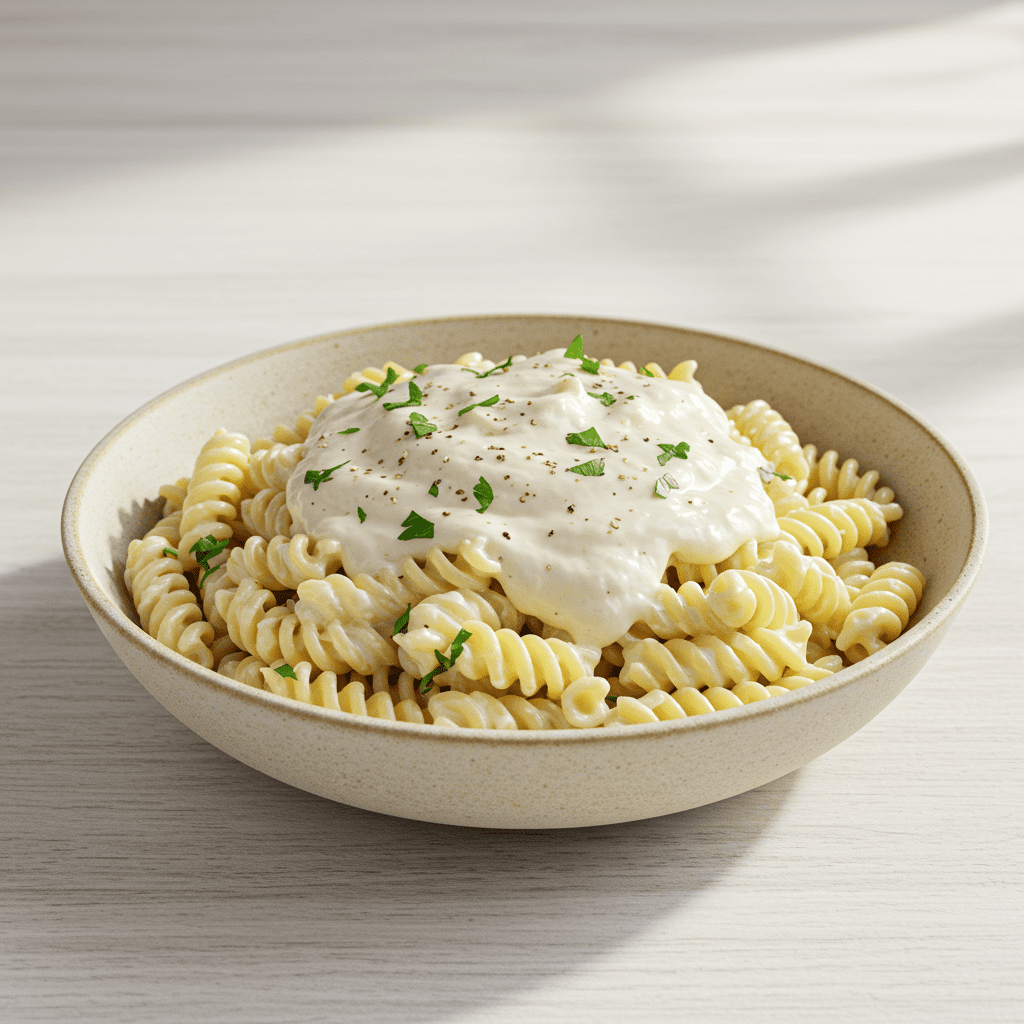
If you’re seeing cottage cheese everywhere lately, you’re not alone. But what if I told you that beyond the viral toast and snack bowls, this humble ingredient holds the secret to the creamiest, most satisfying pasta sauce you’ve ever had? It’s a trick that can transform your meals, much like using smart ingredients can create healthy blueberry chocolate chip muffins that actually taste amazing.
As a dietitian, I was skeptical at first, but I’m here to tell you: this isn’t just a trend. It’s a game-changing way to create a ridiculously delicious and protein-packed meal.
We’re talking all the comforting, velvety goodness of a traditional Alfredo or cream sauce, but with a nutritional profile that actually works for you. Let’s dive into how to make this simple sauce a staple in your healthy recipe collection.
- Why Would I Put Cottage Cheese in My Pasta Sauce?
- Does the Type of Cottage Cheese Really Matter?
- What Ingredients Do I Need?
- How Do I Make the Sauce Step-by-Step?
- What’s the Secret to a Sauce That Never Separates?
- Exactly How Much Protein Does This Recipe Have?
- Can I Customize This Pasta Sauce?
- How Should I Store and Reheat Leftovers?
- Conclusion
Why Would I Put Cottage Cheese in My Pasta Sauce?
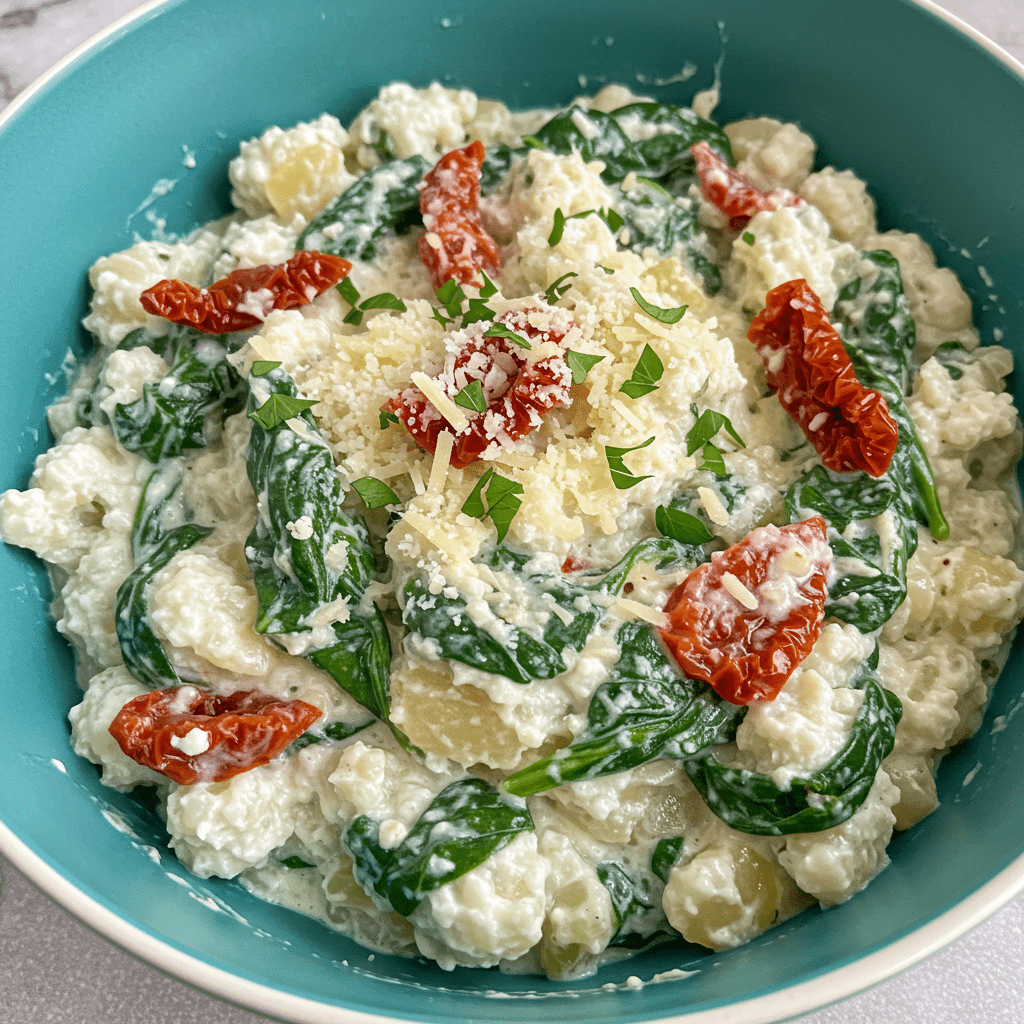
The real magic of using cottage cheese lies in its powerful nutritional profile. Unlike traditional sauce bases like heavy cream, which primarily contribute fat, cottage cheese offers a trifecta of benefits.
First and foremost is the protein. According to the USDA, a single cup of full-fat cottage cheese can contain around 25 grams of high-quality casein and whey protein.
This protein is vital for muscle repair, immune function, and, significantly, for satiety. Research published in the British Journal of Nutrition shows that high-protein meals can help you feel fuller for longer, reducing the urge to snack later.
By replacing empty calories with functional protein, this sauce transforms a simple pasta dish into a truly satisfying and balanced meal.
Does the Type of Cottage Cheese Really Matter?

The secret to a sauce that’s silky smooth instead of separated and gritty comes down to one key choice at the grocery store: always choose full-fat cottage cheese. The fat content is crucial for creating a stable emulsion when blended and gently heated, resulting in that luxurious, creamy texture we’re aiming for.
Low-fat or non-fat versions lack the necessary fat to bind the sauce, making them far more likely to curdle or break when they hit the warm pasta. Don’t worry about the curd size (small vs. large), as everything will be blended until smooth. For the best results, look for brands with a simple ingredient list and a fat content of at least 4%.
What Ingredients Do I Need?
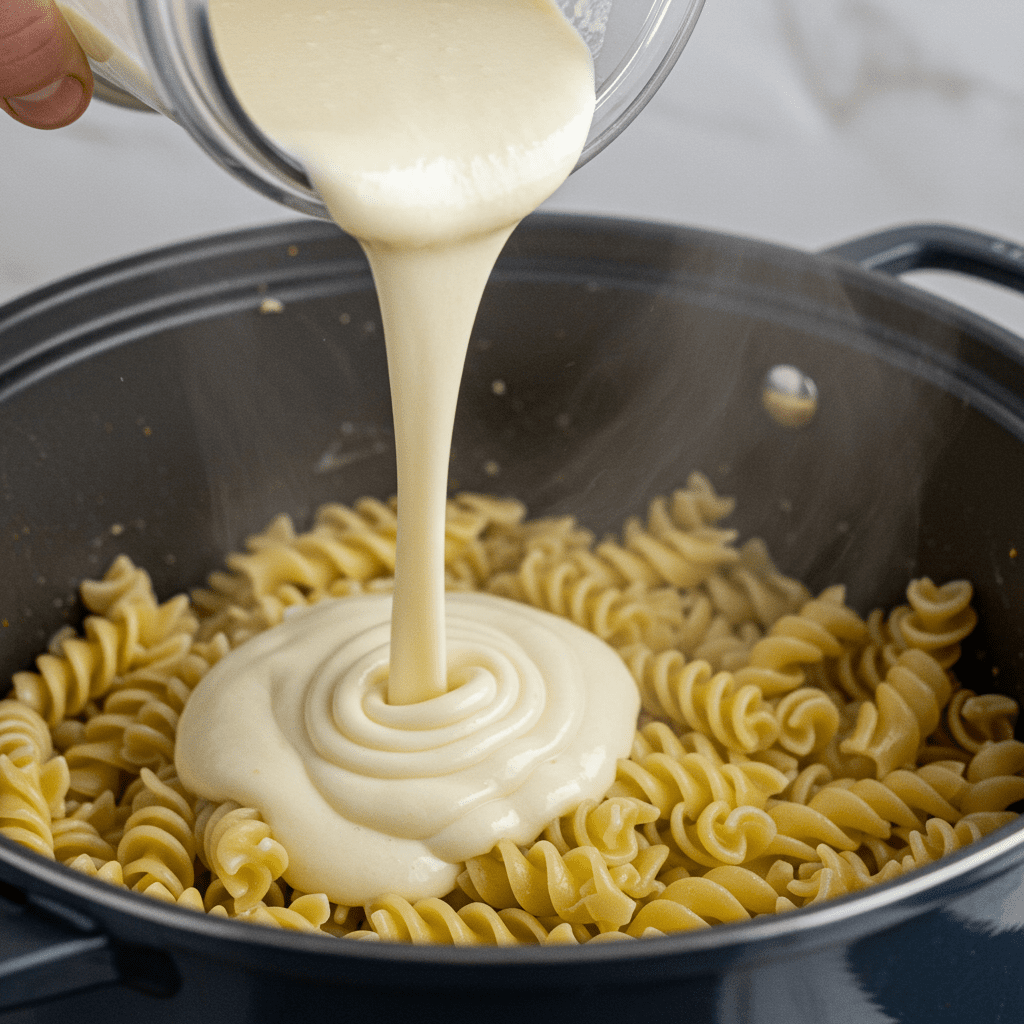
You only need a few simple, wholesome ingredients to bring this amazing sauce to life. Here’s what to gather:
- For the Flavor Base: A tablespoon of butter (or olive oil) to sauté a small yellow onion and four cloves of garlic. This step is essential and builds a deep, aromatic foundation that you can’t get from powders alone.
- For the Creamy Sauce: You’ll need one cup of full-fat cottage cheese, the star of the show. To that, you’ll add two-thirds of a cup of grated Parmesan cheese for that sharp, nutty, classic Italian flavor, and a quarter cup of milk to help everything blend into the perfect consistency.
- For the Pasta: An 8-ounce box of pasta is perfect for this amount of sauce. To really maximize the protein, I recommend using a chickpea or lentil-based pasta. Brands like Banza or Barilla Protein+ are excellent choices that can add an extra 10-12 grams of protein per serving.
- Seasoning: A simple quarter teaspoon of both salt and black pepper is all you need to let the other flavors shine.
How Do I Make the Sauce Step-by-Step?
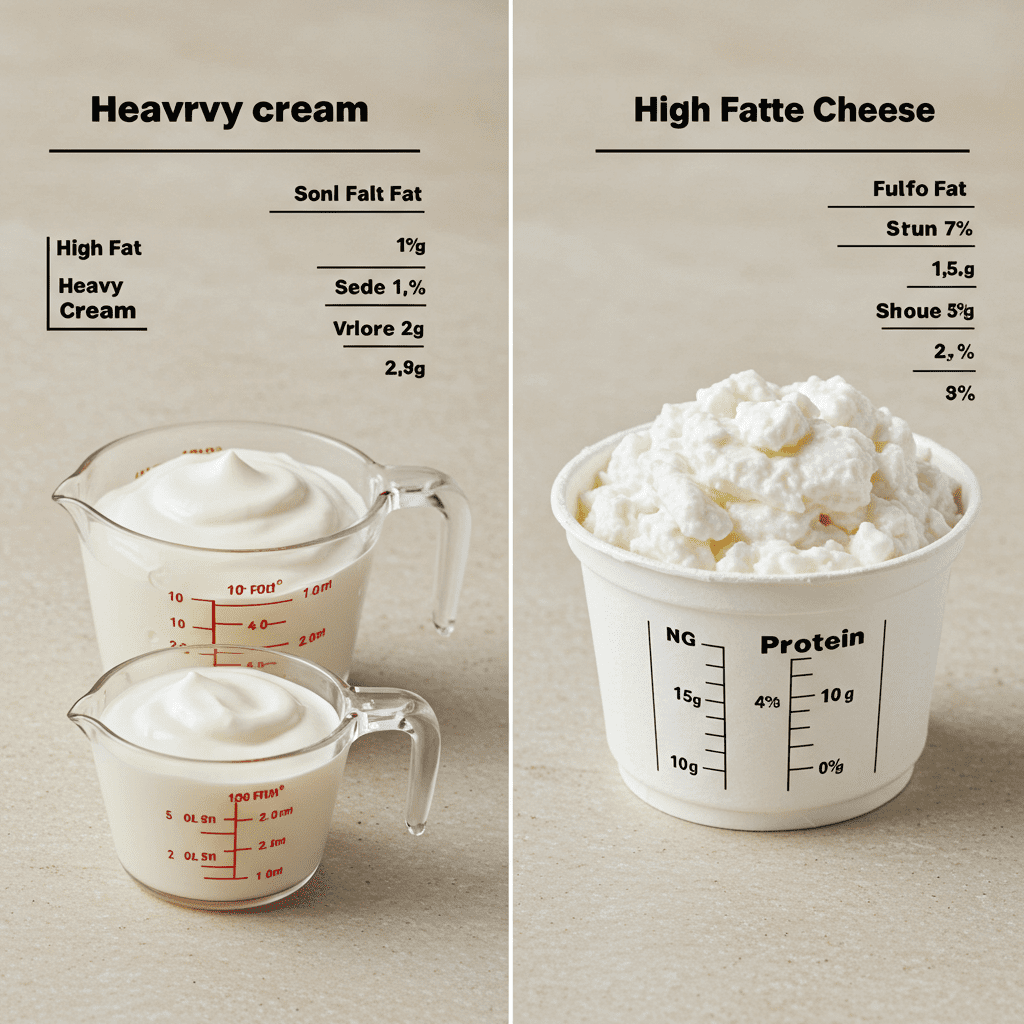
This sauce comes together in the time it takes to boil your pasta. Follow these simple steps for a flawless result every time.
- Cook the Pasta: Bring a large pot of salted water to a boil. Add your pasta and cook according to package directions until al dente.
- Build Your Flavor Base: While the pasta cooks, melt the butter in a small skillet over medium-low heat. Add the chopped onion and minced garlic and sauté gently for 4-5 minutes until the onion is soft and translucent. This process, known as ‘sweating’ the aromatics, releases their sweetness without browning them. Remove from heat.
- Blend to Perfection: In a high-speed blender, combine the full-fat cottage cheese, grated Parmesan cheese, milk, salt, pepper, and the cooked onion and garlic mixture. Blend on high for 60-90 seconds, or until the sauce is completely velvety and smooth with no lumps.
- Combine with Care: Once the pasta is cooked, drain it well but do not rinse it. Return the hot pasta to the warm pot, but make sure the burner is turned off. Let it sit for 2-3 minutes to cool down just slightly from scalding. Pour the blended sauce over the warm pasta and stir gently until every piece is coated in creamy goodness. If needed, you can return the pot to very low heat to warm through, but do not boil.
What’s the Secret to a Sauce That Never Separates?
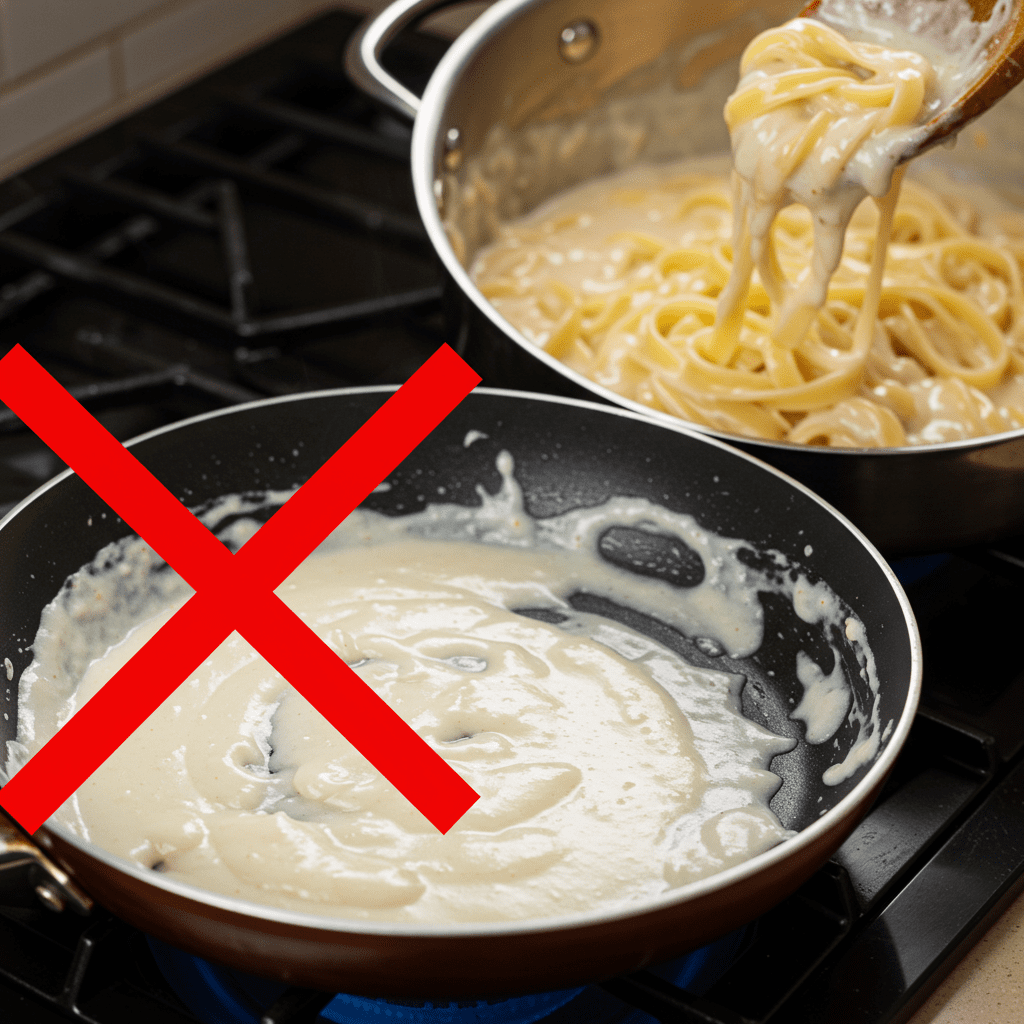
The number one issue people face with dairy-based sauces is separation, which leads to a gritty or watery texture. The cause is simple food science: heat. The main protein in cottage cheese, casein, is sensitive to high temperatures. When heated too quickly, these proteins tighten, curdle, and squeeze out water, breaking your beautiful sauce.
Here are two non-negotiable rules to prevent this:
- Use Full-Fat Cottage Cheese: As we’ve mentioned, the fat acts as a stabilizer and is your best defense against curdling. It creates a richer, more cohesive sauce that can handle gentle heat much better.
- Temper the Sauce: Never pour the cool sauce into a screaming-hot pan or onto pasta that just came out of boiling water. By letting the pasta cool for a minute or two and ensuring the burner is off, you gently introduce the sauce to the heat. This gradual temperature change keeps the proteins relaxed and the sauce perfectly emulsified and creamy. According to food science principles, this gentle heating method is key to maintaining the integrity of protein structures in dairy.
Exactly How Much Protein Does This Recipe Have?

This is where the recipe truly shines. When you combine the sauce with a high-protein pasta, you get a meal that’s incredibly powerful. Let’s look at the numbers for one serving (recipe makes four):
- This Cottage Cheese Pasta Dish: Approximately 337 calories and a whopping 28 grams of protein.
- Traditional Restaurant Alfredo: Can easily top 500-600 calories with only 15-20 grams of protein and significantly more saturated fat.
You’re getting nearly double the protein for half the calories and fat. This impressive protein content comes from the synergy of the cottage cheese, Parmesan, and the chickpea pasta, creating a complete meal that fuels your body and satisfies your craving for comfort food. And if you have a sweet tooth, the same principle can be applied to dessert, like in this creamy chocolate mousse with a high-protein secret.
Authoritative sources like the Cleveland Clinic endorse cottage cheese as an excellent source of protein for a balanced diet.
Can I Customize This Pasta Sauce?

Think of this recipe as your new favorite canvas. It’s delicious on its own, but it’s also incredibly easy to customize based on your taste or what you have in the fridge.
- Make it a Veggie-Lover’s Dream: Wilt in a few large handfuls of fresh spinach at the very end for a boost of iron and vitamins. Or, stir in some sun-dried tomatoes, roasted red peppers, or sautéed mushrooms for a deeper, more complex flavor.
- Add a Protein Punch: While the dish is already high in protein, you can easily add shredded rotisserie chicken, sautéed shrimp, or even a can of rinsed white beans to make it even more substantial.
- Give it a Zesty Kick: A squeeze of fresh lemon juice and a teaspoon of zest added right before serving can brighten up the entire dish, cutting through the richness of the sauce. For a bit of heat, add a pinch of red pepper flakes to the blender.
How Should I Store and Reheat Leftovers?

Yes! This dish makes for fantastic leftovers.
To store, allow the pasta to cool completely before transferring it to an airtight container. It will keep well in the refrigerator for up to 4 days.
When it’s time to reheat, gentleness is key. The best method is to place the pasta in a saucepan over low heat with a splash of milk or water. Stir frequently until it’s just warmed through. You can also microwave it, but do so at 50% power in 30-second intervals, stirring in between. This slow-and-low approach prevents the sauce from getting too hot and separating.
Conclusion
Making a creamy, delicious pasta sauce that’s also high in protein doesn’t have to be complicated. By swapping traditional heavy cream for blended cottage cheese, you’re not just following a trend; you’re making a smart, nutrient-dense choice that supports your health goals without sacrificing an ounce of comfort.
This recipe proves that wholesome food can be incredibly satisfying, easy enough for a busy weeknight, and a dish your whole family can get behind. So go ahead, embrace the creaminess, and feel great about what’s on your plate.
